It looks like you're using an Ad Blocker.
Please white-list or disable AboveTopSecret.com in your ad-blocking tool.
Thank you.
Some features of ATS will be disabled while you continue to use an ad-blocker.
38
share:
The Temple of Ain Dara in Syria was first discoved when a large and very fine lion sculpture was found. Within the Temple are giant footsteps that
stand upon the portico and then stride into the interior of the Temple.
I'll look here at who the Temple was dedicated to, and what story lay behind the giant footprints...

Ain Dara Temple
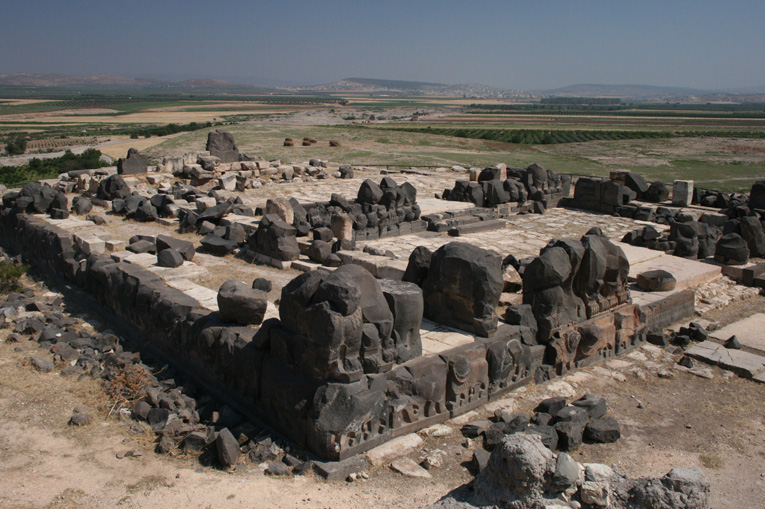
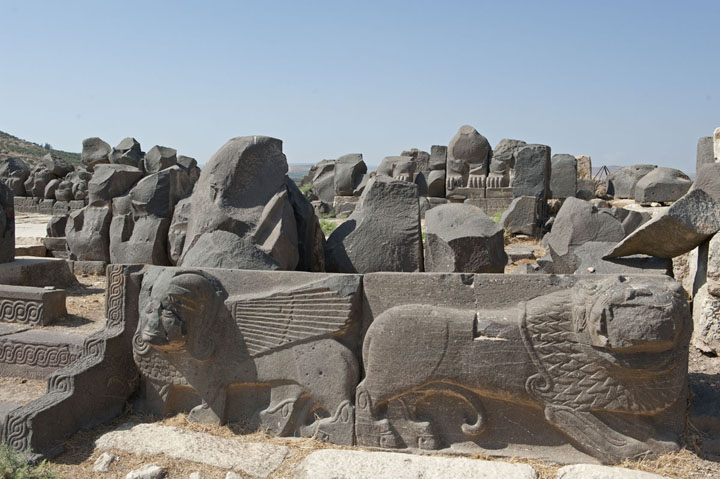
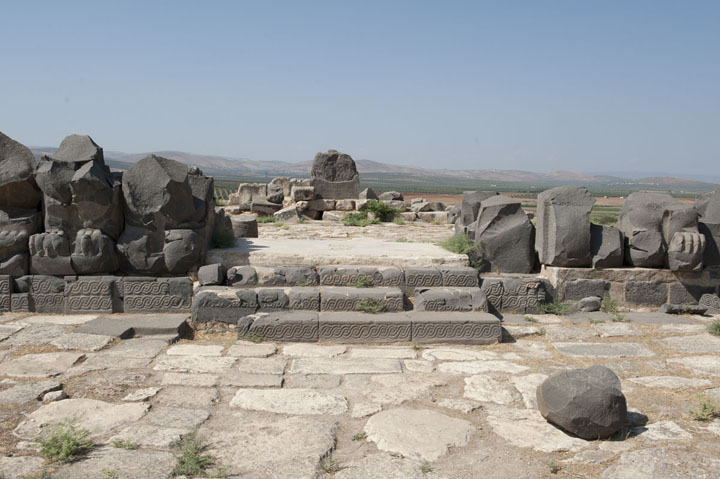
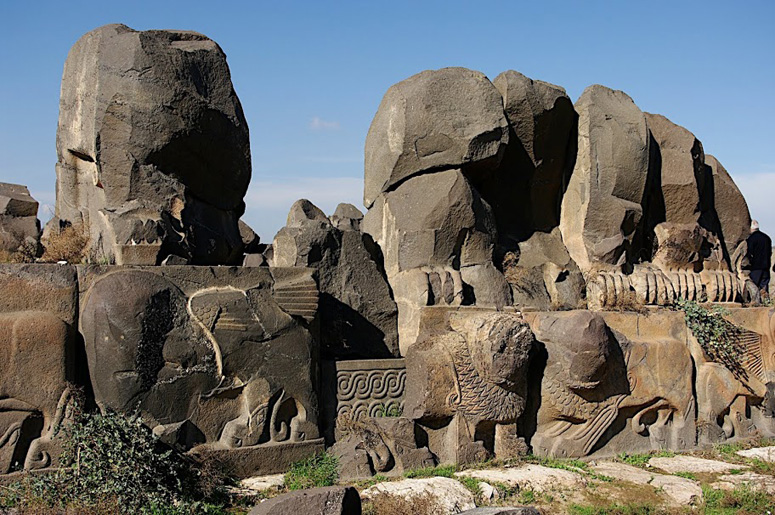
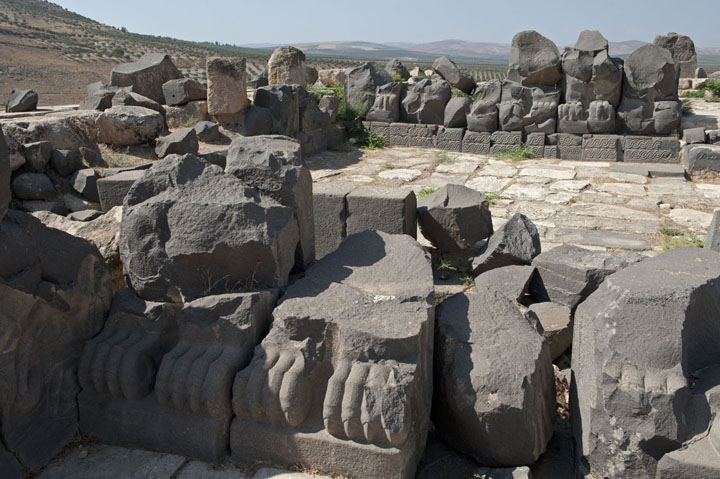
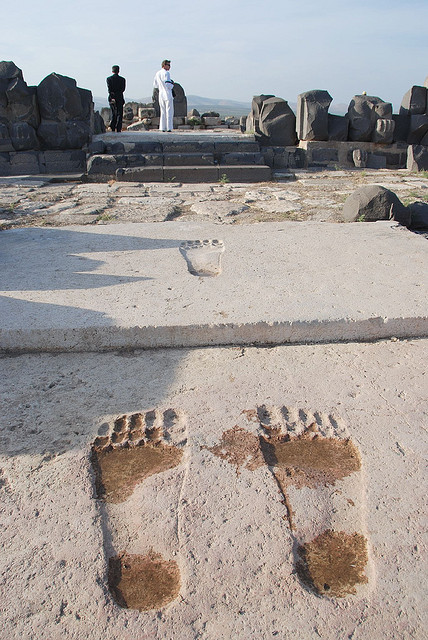
The God then seems to have taken a very long left and then right stride to enter into the Temple

Representations of the Goddess of the Temple, Shaushka, a Hurrian variant of Ishtar don't really suggest she was of great proportion, so probably the footprints were understood as of her consort a storm/mountain God.
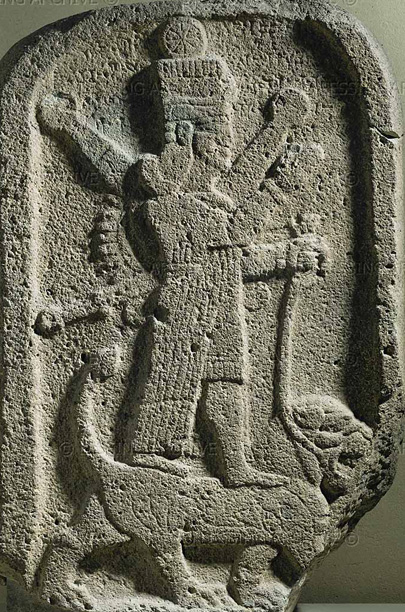
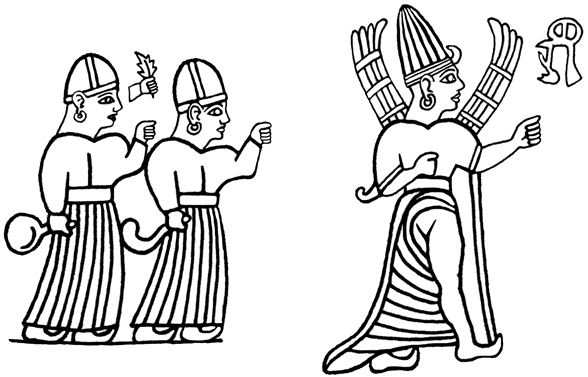
Shaushka is interesting in that she uses her authority in matters of sexuality to mess around a little were she saw fit;
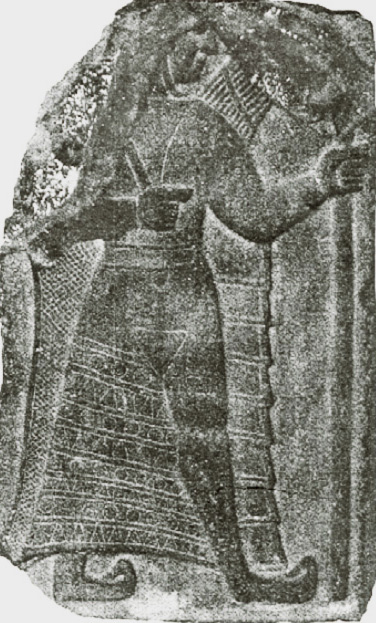
The spouse of Shaushka was Teshub, a storm God and Atlas/Mountain type figure, and as i said, the footprints are probably his;
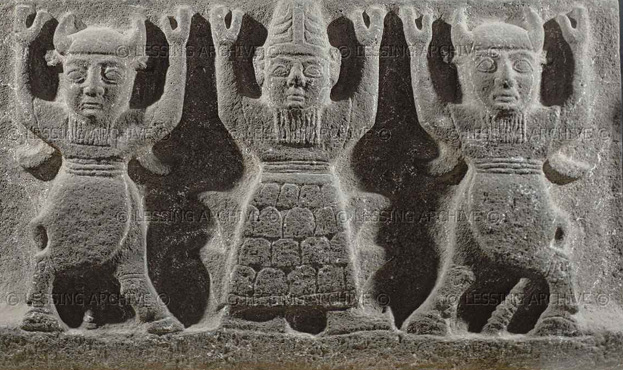
Shaushka and Ain Dara
Indeed the interwoven serpentine patterns of Ain Dara could relate to the slaying of the chaos serpent by Teshub;

To a large extent then the Ain Dara Temple could be dedicated to the God Teshub and his slaying of the serpent of chaos, and his spouse Shaushka in her warlike aspect.
Teshub and the Dragon
Order from Chaos...
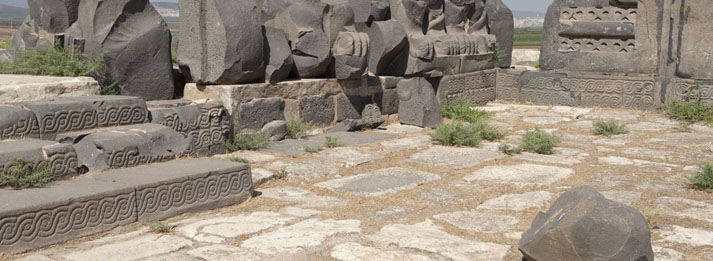
I'll look here at who the Temple was dedicated to, and what story lay behind the giant footprints...

Ain Dara Temple

Ain Dara lies near the Syro-Turkish border, about 40 miles northwest of Aleppo and a little more than 50 miles northeast of Tell Ta‘yinat. The site is large, consisting of a main tell that rises 90 feet above the surrounding plain and an extensive lower city, which covers about 60 acres. ‘Ain Dara first attracted attention in 1955, with the chance discovery of a monumental basalt lion.

Although the site was occupied from the Chalcolithic period (fourth millennium B.C.E.) to the Ottoman period (1517–1917 C.E.), the temple is undoubtedly the most spectacular discovery at the site. According to the excavator, Ali Abu Assaf, it existed for 550 years—from about 1300 B.C.E. to 740 B.C.E.

The building was constructed in Phase 1, which lasted from 1300 B.C.E. to 1000 B.C.E. Oriented towards the southeast, the temple is rectangular in plan, about 65 feet wide by 98 feet long. Built on a large raised platform, the temple consists essentially of three rooms: a niche-like portico, or porch; an antechamber (sometimes called the pronaos); and a main hall (cella, or naos), which housed the innermost shrine (in Biblical terms the debir, or holy of holies).

Ain Dara temple shares many features with Solomon’s Temple in Jerusalem. Indeed, no other building excavated to date has as many features in common with the Biblical description of the Jerusalem Temple. Most basically, both have essentially the same three-division, long-room plan:
At ‘Ain Dara, it is an entry portico, an antechamber and main chamber with screened-off shrine; in Solomon’s Temple, it is an entry portico (’ulam), main hall (heikhal) and shrine, or holy of holies (debir). The only significant difference between the two is the inclusion of the antechamber in the ‘Ain Dara plan. With this exception the two plans are almost identical.

Like Solomon’s Temple, the ‘Ain Dara temple was approached by a courtyard paved with flagstones. A large chalkstone basin used for ceremonial purposes stood in this courtyard. (A large basin was also placed in the courtyard of the Jerusalem Temple [1 Kings 7:23–26].) At the far end of the open courtyard, the temple stood on a 2.5-foot-high platform made of rubble and limestone and lined with basalt blocks engraved with lions, sphinxes and other mythic creatures. A monumental staircase, flanked on each side by a sphinx and two lions, led up to the temple portico. The four basalt steps, only three of which survive, were decorated with a carved guilloche pattern, which consists of interlacing curved lines. The building itself was covered with rows of basalt reliefs of sphinxes, lions, mountain gods and large clawed creatures whose feet alone are preserved.
Three steps, decorated with a chainlike carving, lead up from the broad but shallow antechamber (it is 50 feet wide but only 25 feet deep) to the main hall, which forms an almost perfect square (54.5 by 55 feet).
At the top of the stairs, a limestone slab serves as the threshold to the main chamber. Whoever was striding into the temple portico left a similarly enormous right footprint on this threshold.
The distance between the two single footprints is about 30 feet. A stride of 30 feet would belong to a person (or goddess) about 65 feet tall.

The God then seems to have taken a very long left and then right stride to enter into the Temple

Representations of the Goddess of the Temple, Shaushka, a Hurrian variant of Ishtar don't really suggest she was of great proportion, so probably the footprints were understood as of her consort a storm/mountain God.

Mythically, Shaushka was the daughter of the sky god Anu or the moon god Sin. In a number of texts the storm god Teshub was her brother, in some her husband.[3] She was usually accompanied by two female attendants, the musicians Ninatta and Kulitta.

Shaushka is interesting in that she uses her authority in matters of sexuality to mess around a little were she saw fit;
Texts describe Shaushka as similar to Ishtar, as an ambiguous goddess who supervised married love and harmonious relationships but, unpredictably, could turn love into a dangerous endeavor. According to Hittite texts she was of ambiguous sex also and given to wearing the clothes of both sexes. In addition, she could alter a person's sex. One ritual credited her with the ability to deprive men of "manliness and vitality," to replace their bows and arrows with distaffs and spindles, and to dress them in women's clothes. From women she could take away motherhood and love

The spouse of Shaushka was Teshub, a storm God and Atlas/Mountain type figure, and as i said, the footprints are probably his;
Another personage depicted on the walls is a mountain god, who appears flanked by mythic animals. Certainly there were many mountain-range and peak deities in the surrounding mountainous area. Some scholars have speculated that the 'Ain Dara mountain god was the spouse of the goddess. In support of this suggestion, in the temple of the storm god at Aleppo, not far from 'Ain Dara, the stela of Shaushka stands next to that of a mountain god as if they were spouses (Gonnella, Khayyata, and Kohlmeyer 2005: 101-102). At 'Ain Dara there are several images of this Atlas-like figure, a fact which indicates that he was probably revered at the temple, perhaps as the goddess's spouse.

Shaushka and Ain Dara
Indeed the interwoven serpentine patterns of Ain Dara could relate to the slaying of the chaos serpent by Teshub;
he Hittite Storm God was known as Tarhun ("The Conqueror") and he was equated with the earlier Hattian god Taru and Hurrian god Teshub, by whose name this deity is commonly known. The Storm God killed Illuyanka, whose name simply means "serpent."

To a large extent then the Ain Dara Temple could be dedicated to the God Teshub and his slaying of the serpent of chaos, and his spouse Shaushka in her warlike aspect.
Teshub and the Dragon
Order from Chaos...

edit on 23-3-2013 by Kantzveldt because: (no reason given)
Your threads are always so well put together, thank you.
I have never heard of this before. Thank you for introducing it here.
I have never heard of this before. Thank you for introducing it here.
Thanks for the replies, this temple is a really interesting combination of influences, Hittite, Hurrian and Assyrian
.The two Deities are Hurrian and their origins are unknown and their language is considered an isolate, they're the most intriguing people in the region at that time, with their artwork also differant than elsewhere.
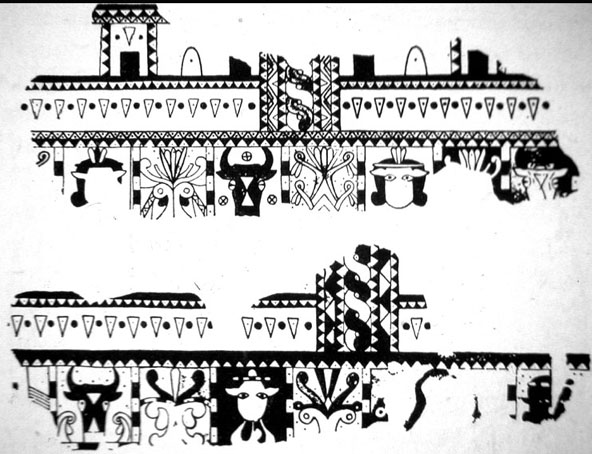
.The two Deities are Hurrian and their origins are unknown and their language is considered an isolate, they're the most intriguing people in the region at that time, with their artwork also differant than elsewhere.

edit on 24-3-2013 by Kantzveldt because: (no reason given)
S&F thank you OP great read ..I am always curious what a place like this must have been like when it was brand new ...
Excellent thread OP :-)
What I find intriguing is those footprints. Why would someone go to the bother of carving them? What is their significance and why did they need to be so big?
Maybe the legends of giants have some truth in them after all. After all the story of David and Goliath mentions giants too. New Zealand Maori creation stories also talk of giants.
There is a legend in Maori folklore that talks of a giant eagle that was large enough to take away an adult as prey. Everyone thought it was just a fanciful story until fossilised bones if a new species of giant were found just recently. And yes it was a bird of prey, yes it flew and yes it was big enough to carry away at least a child.
io9.com...
So it makes me wonder if a stone age society with no written records could accurately keep an historical record of a now extinct species, could there be some truths in some of these stories of old?
What I find intriguing is those footprints. Why would someone go to the bother of carving them? What is their significance and why did they need to be so big?
Maybe the legends of giants have some truth in them after all. After all the story of David and Goliath mentions giants too. New Zealand Maori creation stories also talk of giants.
There is a legend in Maori folklore that talks of a giant eagle that was large enough to take away an adult as prey. Everyone thought it was just a fanciful story until fossilised bones if a new species of giant were found just recently. And yes it was a bird of prey, yes it flew and yes it was big enough to carry away at least a child.
io9.com...
So it makes me wonder if a stone age society with no written records could accurately keep an historical record of a now extinct species, could there be some truths in some of these stories of old?
reply to post by markosity1973
Yes it's interesting, this Temple is the closest parallel to the Biblical Temple of Solomon in overall design, and must have been influential.
The footprints show the Hebrews weren't the only ones concerned with giants in the region.
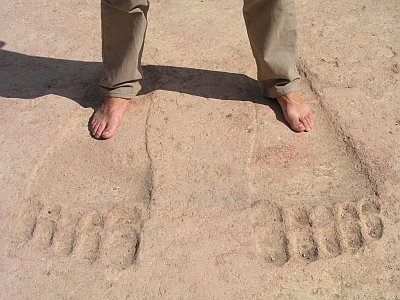
Thanks for the replies and interest everyone...
Yes it's interesting, this Temple is the closest parallel to the Biblical Temple of Solomon in overall design, and must have been influential.
The footprints show the Hebrews weren't the only ones concerned with giants in the region.

Thanks for the replies and interest everyone...
reply to post by Kantzveldt
Kantzveldt, thank you for another well put together thread. 1 has noticed your interest and shares on the ancient past, and definitely appreciate these types of reads. They do help to redesign a better picture of the past and activities related. These Large foot prints and other NOT MENTIONED related Evidence do/would share some interesting data of past activities HERE on EA*RTH and it would be interesting to see a COMPILED data base of withheld and shared data globally, can you imagine the information and how well it would funnel through if China Russia & USA and the many others all shared the information that is held... It would probably enlighten the entire EA*RTH herd a bit better instead of leaving many of us to find and share the fragmented data we can. This is why 1 enjoys your thread content your style reminds me of another member but maybe many faces support the overall. With that thanks again for the share 1 has added it to the interwebs favs
NAMASTE*******
Kantzveldt, thank you for another well put together thread. 1 has noticed your interest and shares on the ancient past, and definitely appreciate these types of reads. They do help to redesign a better picture of the past and activities related. These Large foot prints and other NOT MENTIONED related Evidence do/would share some interesting data of past activities HERE on EA*RTH and it would be interesting to see a COMPILED data base of withheld and shared data globally, can you imagine the information and how well it would funnel through if China Russia & USA and the many others all shared the information that is held... It would probably enlighten the entire EA*RTH herd a bit better instead of leaving many of us to find and share the fragmented data we can. This is why 1 enjoys your thread content your style reminds me of another member but maybe many faces support the overall. With that thanks again for the share 1 has added it to the interwebs favs
NAMASTE*******
Originally posted by Kantzveldt
reply to post by markosity1973
Yes it's interesting, this Temple is the closest parallel to the Biblical Temple of Solomon in overall design, and must have been influential.
The footprints show the Hebrews weren't the only ones concerned with giants in the region.
Wow ! Those prints are huge. By my guestimation, they're somewhere close to 4 ft. long. Definitely over 3 feet.
Thanks for the replies and interest everyone...
new topics
-
Dr Cambell talking about using worm meds for cancer
Medical Issues & Conspiracies: 1 hours ago -
A Question for You on the Left
Political Ideology: 3 hours ago -
Words of Wisdom from the Dear Leader - Transcribed for the World
Regional Politics: 4 hours ago -
Looks like Biden kicked off WWIII and Putin threatening nukes to retaliate
World War Three: 4 hours ago -
Watch SpaceX Starship Test Flight 6 Live - Launch Starts 4pm CST , 2200 GMT.
Space Exploration: 8 hours ago -
Watch Dramatic Moment Ukrainian Nursery Teacher Takes Out Russian Missile With Rocket Launcher
Mainstream News: 9 hours ago
top topics
-
A Question for You on the Left
Political Ideology: 3 hours ago, 13 flags -
Looks like Biden kicked off WWIII and Putin threatening nukes to retaliate
World War Three: 4 hours ago, 9 flags -
Dr Cambell talking about using worm meds for cancer
Medical Issues & Conspiracies: 1 hours ago, 9 flags -
He Had and It Has
Short Stories: 13 hours ago, 4 flags -
Words of Wisdom from the Dear Leader - Transcribed for the World
Regional Politics: 4 hours ago, 4 flags -
Morning’s Reverie
Short Stories: 15 hours ago, 3 flags -
Watch SpaceX Starship Test Flight 6 Live - Launch Starts 4pm CST , 2200 GMT.
Space Exploration: 8 hours ago, 3 flags -
Watch Dramatic Moment Ukrainian Nursery Teacher Takes Out Russian Missile With Rocket Launcher
Mainstream News: 9 hours ago, 2 flags
active topics
-
Watch Dramatic Moment Ukrainian Nursery Teacher Takes Out Russian Missile With Rocket Launcher
Mainstream News • 26 • : Oldcarpy2 -
A Question for You on the Left
Political Ideology • 19 • : BingoMcGoof -
Former DOJ charged with defrauding Rep. Matt Gaetz’s family over sex-crimes investigation
Propaganda Mill • 36 • : fringeofthefringe -
President-elect TRUMP Picks MATT GAETZ for his ATTORNEY GENERAL - High Level PANIC Ensues.
2024 Elections • 103 • : WeMustCare -
-@TH3WH17ERABB17- -Q- ---TIME TO SHOW THE WORLD--- -Part- --44--
Dissecting Disinformation • 3307 • : Thoughtful3 -
Dr Cambell talking about using worm meds for cancer
Medical Issues & Conspiracies • 8 • : marg6043 -
Russian ‘floating bomb’ ship packed with explosives now just 15 miles from two UK towns
Breaking Alternative News • 157 • : Oldcarpy2 -
Post A Funny (T&C Friendly) Pic Part IV: The LOL awakens!
General Chit Chat • 7792 • : KrustyKrab -
He Had and It Has
Short Stories • 5 • : BingoMcGoof -
Well, here we go red lines crossed Biden gives the go ahead to use long range missiles
World War Three • 233 • : Oldcarpy2
38
